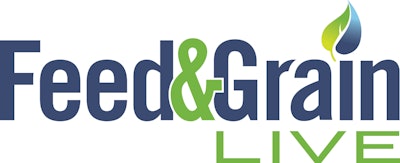
The speaker lineup for Feed & Grain LIVE 2020, Feb. 5-7, 2020, is growing quickly. The most recently confirmed speakers include:
■ Lindsay Calvert, leadership development manager for Iowa Corn Growers Association (ICGA)
■ Dr. John Foltz, chair of the Department of Animal Sciences at The Ohio State University (OSU)
■ Michael Nepveux, economist with the American Farm Bureau Federation (AFBF).
Each shares insights of what they’ll present.
Uniting generations
Calvert worked with American Farm Bureau Federation in multi-generation training before joining ICGA where she works on collegiate programs and I-LEAD, an ongoing leadership program for 25 farmers and agribusiness professionals. She also manages education, staff and committee development.
She will address challenges managers sometimes face with four generations working under one roof. It’s more common now than ever.
“We’re seeing baby boomers work longer than previous generations,” Calvert says. “According to the Pew Research Center, 19.5% of Americans 65 or older are still working. Plus, we still have the 18- to 22-year-olds entering the workface, a widespread age gap of people working together.”
She notes this gap can create tensions. One is defining what a fulltime, salaried position entails. Is it 8 a.m. to 5 p.m. only or if there is flexibility in how, when and where work gets done?
“You have to engage in these conversations to find compromises and make the workplace better,” Calvert says. “It is important to understand that when working with different generations, one’s birth year does not define a person and we cannot use it to put people into narrowly defined stereotypes.”
Calvert will offer practical methods to get rid of stereotypes and understand different generations.
For example, millennials took over the workforce in 2016. It is now the largest working population. While it’s easy to think of them as entitled kids, the reality is older millennials are nearly 40 years old. And, as Gen Z — those born after 1996 — comes into the workforce, it helps to realize that 9/11 is history to them. They’ve grown up with violence in the news and are likely more skeptical of the world than their millennial counterparts.
There are commonalities among generations, Calvert says. Professional development is one. She’ll demonstrate how the different groups prefer to learn and how employers can best address them.
Customer service remains top priority
It’s a basic principle that businesses need customers. It takes top customer service to retain existing ones and attract new ones.
“Study after study shows that it’s easier to keep existing customers than to get new ones,” Foltz says. “Good customer service can be defined in multiple ways, but practicing it is sound business whether you’re in the feed and grain business or fertilizer business.”
Foltz notes that involving your customers to help define good customer service is an effective method to get buy-in and will likely give managers insight as to why customers act the way they do.
“One way is to observe customers,” he says. “See how people respond to positive or negative incentives. You can also conduct surveys and sometimes uncover worthwhile things from them. It can be a written survey included with a bill, at the end of a transaction or it can be a verbal survey where for a specified time period, employees will ask each customer specific questions as the enter the business.”
Advisory boards also work well. Foltz says these groups can be great sounding boards as participants can be brutally honest and often describe how they believe other customers might react to a change in product or service offerings.
In addition to knowing customer preferences, training employees how to handle situations when things go wrong is important. It’s also critical employees feel comfortable going the extra mile, such as emergency feed deliveries.
“Your business can be whatever you want it to be,” Foltz says. “I intend to help attendees put on their thinking caps and find ways to interact with and be helpful to customers.”
ASF changing protein production
African swine fever (ASF), a severe viral disease that spreads rapidly in pig herds, has devastated the swine herd in China, the world’s largest pork market. It continues to spread there, as well as in other Asian countries. AFBF’s Nepveux says effects of the virus will have strong implications in the feed and grain industry.
“ASF originated in Africa and it took decades for it to work its way to Eastern Europe and Russia,” Nepveux says. “It went through China in six months and it’s not stopping.
“This is important to the global pork market. Before ASF hit, China was home to half of the world’s pigs. Though we don’t have verified figures, most estimate well upwards of 25% of China’s swine herds have been depopulated or died from ASF.”
Industry observers believe ASF is endemic to China and has become a larger problem for southeast Asia. It has spread to Cambodia, Laos, Mongolia North Korea Vietnam and some islands.
“This will result in a global shift of the flow of animal protein,” Nepveux says. “It will affect pork, poultry, aquaculture and beef, to a degree. Poultry will likely benefit the most in the short-term as it takes little time for birds to reach maturity and is closer to pork in terms of Chinese consumer preference.
“This remains a huge opportunity for U.S. pork,” he adds. “Despite current trade disagreements, our producers are ready to help fill the gap. I think we could see an increase in pork and poultry production, and to an extent, beef production as a result of ASF.”
Nepveux says that right now, he’s bullish on opportunities this brings to the domestic feed and grain business. No doubt, the LIVE 2020 audience will be all ears for his February update.
Stay tuned for more updates to LIVE 2020 and register early at live.feedandgrain.com. ■














